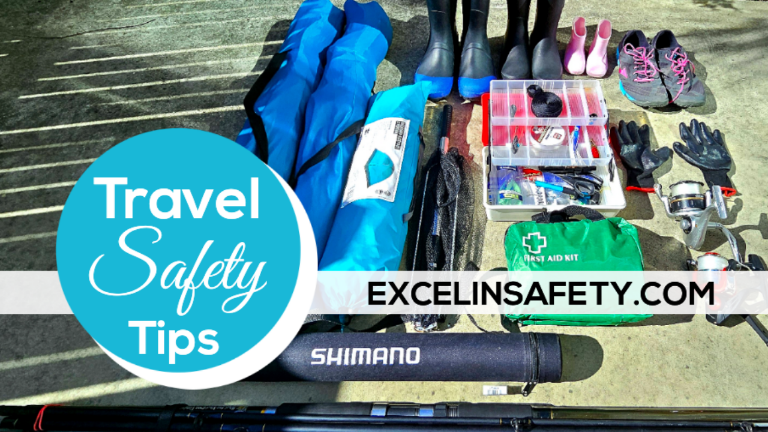Workplace safety is of utmost importance, and it is essential that employees are aware of the various safety terminologies used in the workplace. These safety terminologies not only ensure safety but also help employees understand the safety procedures and protocols that need to be followed. In this blog, we will cover A-Z safety terminologies that every employee should be familiar with to ensure a safe working environment.
A is for Accident:
An accident is an unexpected and unintentional event that results in damage, injury, or loss. Accidents can be prevented by adhering to safety protocols and ensuring that the workplace is free from hazards.
B is for Biological Hazards:
Biological hazards refer to the potential risk posed by biological agents such as bacteria, viruses, fungi, and parasites. These hazards can be found in the workplace, and it is essential to ensure that proper safety measures are in place to prevent exposure.
C is for Chemical Hazards:
Chemical hazards refer to any substance that has the potential to cause harm, such as toxic chemicals or gases. Employees must be trained on the proper handling and storage of such substances to minimize the risk of accidents or injuries.
D is for Duty of Care:
The duty of care is a legal obligation that an employer has to ensure the safety and well-being of employees in the workplace. This includes providing appropriate safety equipment, training, and a safe working environment.
E is for Emergency Evacuation:
Emergency evacuation refers to the process of quickly and safely exiting a building in the event of an emergency, such as a fire or natural disaster. All employees should be trained on emergency evacuation procedures to ensure a safe and efficient evacuation.
F is for Fire Safety:
Fire safety refers to the precautions and measures taken to prevent fires and ensure that employees are safe in the event of a fire. This includes having fire alarms, extinguishers, and emergency exit routes in place, as well as training employees on fire safety protocols.
G is for Hazardous Materials:
Hazardous materials refer to any substance that poses a risk to health, safety, or the environment, such as chemicals or radioactive materials. Employees must be trained on the proper handling and storage of hazardous materials to minimize the risk of accidents or injuries.
H is for Health and Safety:
Health and safety refer to the measures and procedures taken to ensure the physical and mental well-being of employees in the workplace. This includes providing appropriate safety equipment, training, and a safe working environment.
I is for Incident:
An incident is any unexpected event that could have resulted in injury, damage, or loss. It is essential to report all incidents, no matter how minor, to ensure that appropriate safety measures are put in place to prevent future incidents.
J is for Job Hazard Analysis:
Job hazard analysis is a systematic process used to identify potential hazards and risks associated with a particular job or task. This analysis helps to identify potential safety hazards and develop strategies to minimize risks.
K is for Knockdown:
A knockdown is a sudden and unexpected fall, which can result in injury or damage. Proper safety equipment and protocols must be in place to prevent knockdowns and minimize the risk of injury.
L is for Lockout/Tagout:
Lockout/tagout is a safety procedure used to ensure that machinery and equipment are properly shut down and not restarted until maintenance or repairs are complete. This procedure helps prevent accidental start-up of equipment and ensures the safety of employees working on or near the equipment.
M is for Manual Handling:
Manual handling refers to any task that involves lifting, carrying, or moving objects by hand. Proper training and safety equipment are necessary to prevent injuries associated with manual handling.
N is for Near Miss:
A near miss is an incident that could have resulted in injury or damage but did not. Reporting
O – Occupational Safety and Health Administration (OSHA):
OSHA is a federal agency that is responsible for ensuring workplace safety and health in the United States. OSHA sets and enforces safety and health standards, provides training and education to employers and employees, and conducts workplace inspections to ensure compliance with safety regulations.
P – Personal protective equipment (PPE):
PPE refers to equipment and clothing worn by workers to protect them from hazards in the workplace. PPE can include items such as hard hats, safety glasses, gloves, respirators, and safety shoes.
Q – Quality control:
Quality control refers to the process of ensuring that products or services meet specified quality standards. In the context of safety, quality control can involve inspecting safety equipment or safety procedures to ensure that they are effective in preventing accidents or injuries.
R – Risk assessment:
Risk assessment is the process of identifying potential hazards and evaluating the likelihood and severity of harm that may result from exposure to those hazards. Risk assessment is used to determine appropriate safety measures and to prioritize safety efforts.
S – Safety culture:
Safety culture refers to the attitudes, beliefs, and values that shape the behavior of individuals and organizations with respect to safety. A strong safety culture is characterized by a shared commitment to safety, a willingness to identify and report hazards, and a proactive approach to preventing accidents and injuries.
T – Toolbox talk:
A toolbox talk is a short safety meeting held before the start of a work shift or task. Toolbox talks are used to review safety procedures, identify potential hazards, and reinforce safe work practices.
U – Unsafe act:
An unsafe act is any behavior or action that could result in injury or damage to property. Unsafe acts can include not using PPE, working with equipment without proper training, or disregarding safety procedures.
V – Ventilation:
Ventilation refers to the process of providing fresh air to an indoor space to remove stale air and pollutants. Adequate ventilation is important for maintaining good indoor air quality and can help to prevent health problems related to poor air quality.
W – Work-related injury:
A work-related injury is any injury that occurs while an employee is performing work duties or while on company property. Work-related injuries can include slips and falls, sprains and strains, cuts and bruises, and more serious injuries such as burns or electrical shock.
X – X-ray:
X-ray is a type of radiation that is used for diagnostic purposes in the medical field. In the context of safety, X-rays may be used to inspect welds or other critical components for defects or weaknesses.
Y – Yield strength:
Yield strength is the amount of stress that a material can withstand without permanent deformation or failure. Yield strength is an important consideration in the design and manufacture of safety equipment and structures.
Z – Zero harm:
Zero harm is a goal or target that aims to eliminate all workplace injuries and accidents. The Zero Harm concept also involves continuous improvement, where safety practices are regularly reviewed, evaluated, and improved upon to prevent incidents and injuries from occurring. Employers should establish safety performance metrics to track progress towards Zero Harm and celebrate successes and improvements made in safety performance.
Safety terminologies play a crucial role in creating a safe and healthy workplace environment. It is essential for employees to have a basic understanding of safety terminologies to ensure they can take appropriate actions to prevent accidents and injuries. An effective safety program should include regular training sessions to familiarize employees with safety terminologies and their significance in the workplace.
It is also important to note that safety terminologies are constantly evolving, and new terminologies are emerging as technology advances and new hazards arise. Therefore, it is crucial to stay updated on the latest safety terminologies and regulations to maintain a safe workplace environment.
By implementing a safety program that emphasizes the importance of safety terminologies, employers can ensure that their employees are well-informed and equipped with the knowledge and skills to maintain a safe and healthy workplace. Ultimately, this can lead to a decrease in accidents, injuries, and fatalities, and create a more productive and positive workplace environment.








Leave a Reply
You must be logged in to post a comment.